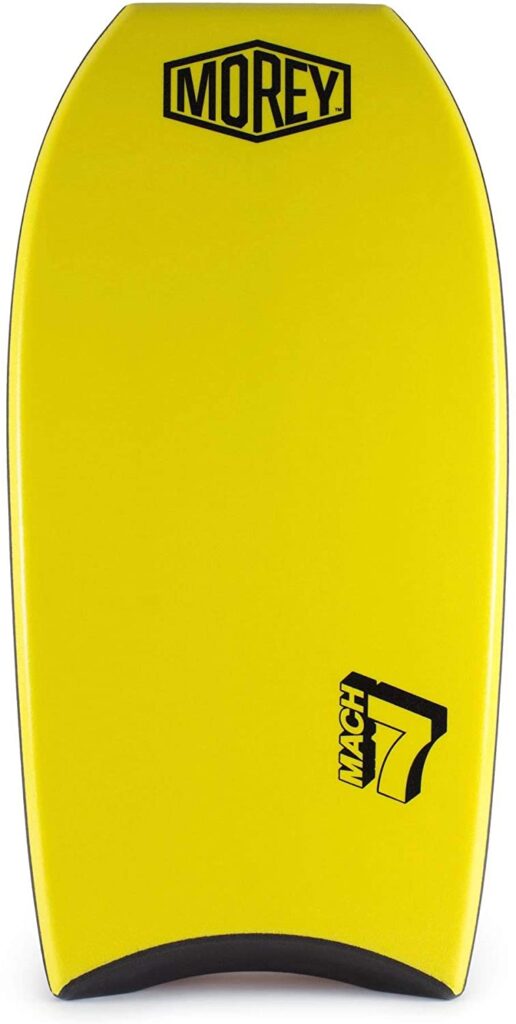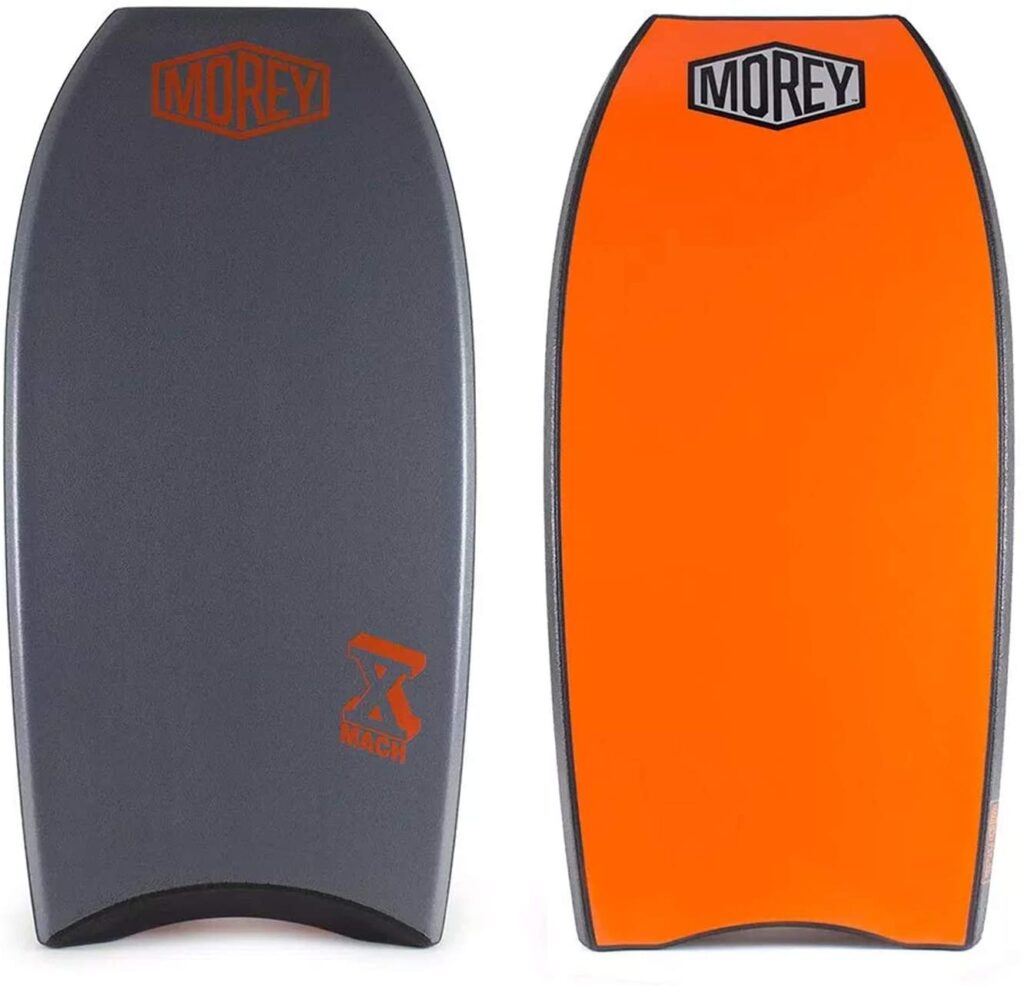Bodyboards come in various sizes and are made out of different materials. Choosing just any size will help you conquer the waves… but will also cause undue fatigue and stress. So how to choose the right Board Size? And which type of Bodyboard is right dor you?
We’ve got you covered…
To help you figure out the best size so you can effortlessly ride the waves: here’s the Bodyboard Size and Weight Chart!
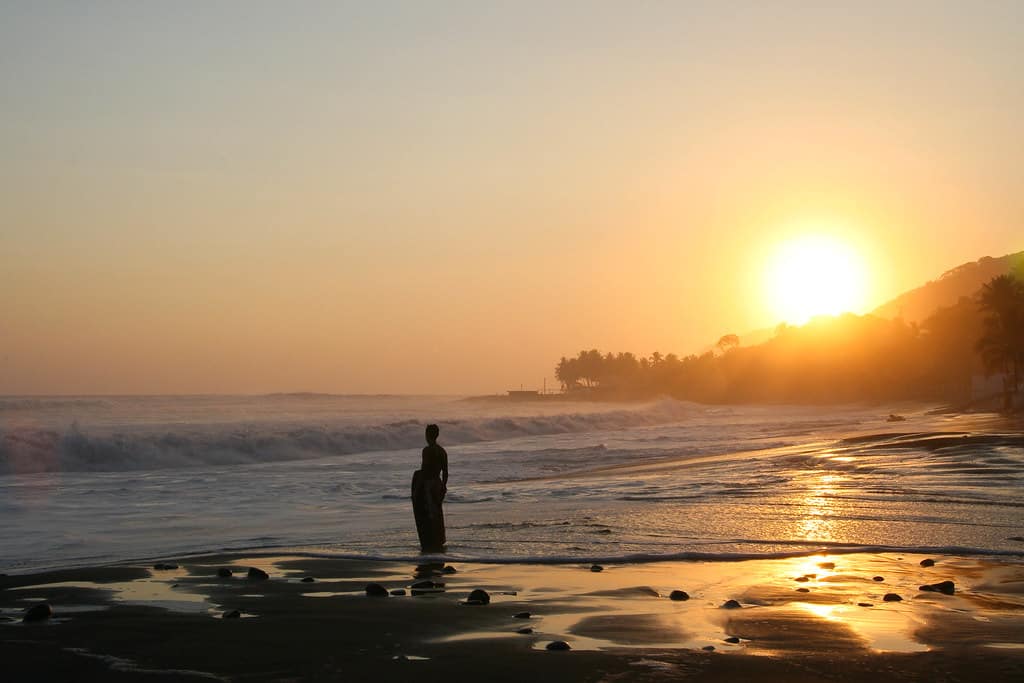
Recommended lengths – Bodyboard Size Chart
Just to be clear from the beginning: choosing the size of a Bodyboard is no exact science. The recommended lengths below are ballpark figures.
An often asked question is: Are bigger or smaller bodyboards better?
A slightly bigger board is generally better than a slightly smaller one, especially for inexperienced bodyboarders and those wanting to do drop – knee or stand – up Bodyboarding. So if you are unsure about which size is exactly the best for you, go on the larger side!
How you should read the Size Chart
- Find either your weight or your height in the table below (first table in pounds and inches; second table table in kg and cm).
- Pick the corresponding bodyboard length and test it out.
- If the board doesn’t feel right, take a bodyboard from one category below and one category above to narrow down the search.
- If none of them feel right, start the search all over but now consider your weight (height) instead of height (weight).
As we said above: The tables give you an orientation on which Bodyboard size, not less not more.
The right size is finally depending on you preferences – so be prepared to test.

Besides choosing the right size, it is important to have some knowledge about the different types of Bodyboards and the most important features of a Bodyboard.
In the next sections, we show you everything you need to know. If you would like to have a shorter step-by-step Guide, which leads you through the whole decision process, check out our Bodyboard Buying Guide!
Rule of Thumb to determine the right size of your Boogie Board:
If you don’t want to go into the details of a table, you can apply the following rule of thumb:
Place the board upright on the floor. The nose of the board should now reach to the belly button or slightly above.
The important thing is simply that if you are a little heavier than the “average”, this rule will cause you to choose a board with too little buoyancy.
Bodyboard Core Materials – are the differences relevant?
There are three modern materials used in bodyboards:
- PE (dow polyethylene foam)
- PP (polypropylene foam)
- EPS (extruded polystyrene)
PE boards are flexible and all – around best performers in cold temperatures. In warm temperatures, a PE board will soften up and provide extra flexibility but also return to its original shape when it cools down.
PP boards are light and stiff. In cold waters they might become too stiff for most bodyboarders. Therefore, if you spend a little more money for a quality PP Board, check that it has an adaptable stringer system (more to that below).
EPS boards are soft, entry – level products, meant for gentle, slow waves and getting your feet wet. In harsher conditions, they might warp or crease.
Softer boards are for lightweight users, while stiffer boards carry the weight better.
A board that’s a mix of PE and PP is a solid choice as well for entry – level and experienced riders.
Avoid boards that cost $20 or less, since they are of poor quality and meant for tourists to waste their cash on.
Conclusion on Core Materials
EPS Bodyboards
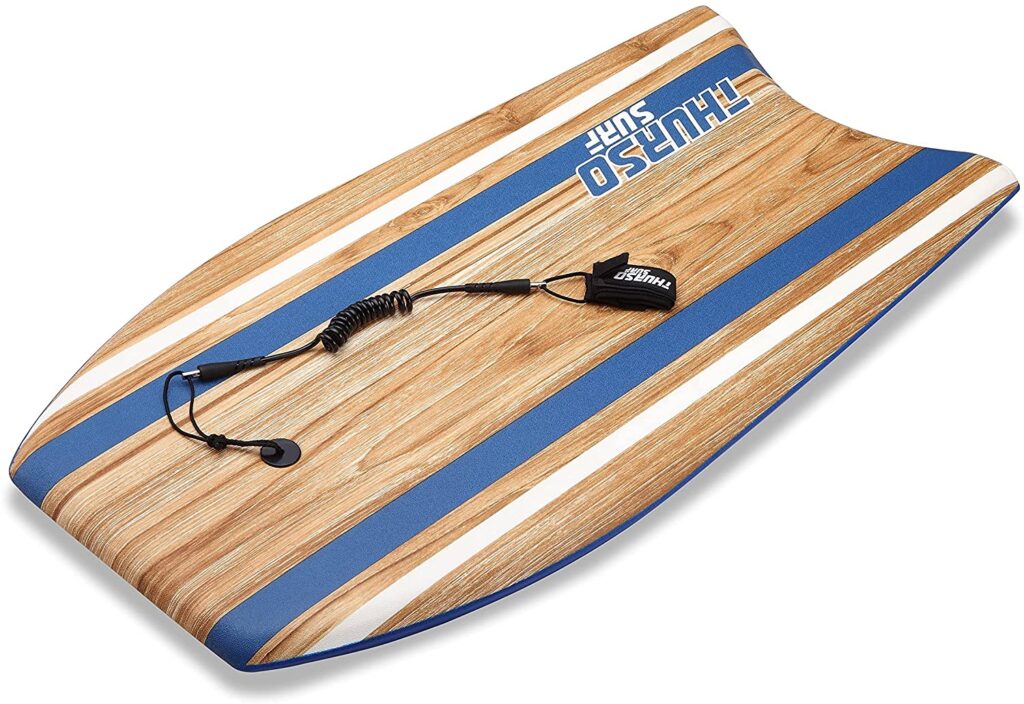
These Boards are made out of EPS cores, which is basically a styrofoam, and are typically only entry – level boards. This allows the manufacturers to provide really cheap boards, but they are also neither durable nor suitable for more than just a little splashing in the water.
So if you look just for a water toy, these boards are allright. But as soon as you want to ride regularly some waves, it’s worth to spend a little more on a better quality Bodyboard.
An example of a good EPS Board, which provides above average Quality, is the THURSO Surf Quill. If you would like to find out more about this Bodyboard, check out our In-Depth Review.
PE Bodyboards
PE Bodyboards are about double the prize compared to the entry – level EPS core boards.
But there is a reason why PE is used for decades in bodyboards: PE provides the durability and buoyancy needed.Compared to a PP core Board, PE boards are a little heavier and less suitable for warm waters above 75°F, because PE then looses more stiffness (and the risk that you buckle your board increases).
Nowadays most of the PE boards also have so – called stringers and some have a mesh in them which prevents them from flexing too much.
Consequently, choosing a PE board is definitely a good choice except you mostly surf in tropical waters as they give you a really good price – performance ratio.
An example of a great PE Bodyboard, which has all of the important features like a Stringer System and a Mesh Layer, is the Morey Mach 7.
PP Bodyboards
PP boards are the best allround Bodyboard concerning water temperatures. Combined with that nowadays all PP Boards have at least one stringer and / or mesh layer in them, PP core Boards should be you choice if you want to have a performant all – year board which you can use in all conditions.
To be honest with you, PP boards are typically the most expensive ones. But you get superior quality in exchange…
Probably the greatest PP Bodyboard is the Morey Mach 10. Besides the high quality core material, it contains everything a high quality and high performance board needs.
With this Board, you’ll get everything you need whether you are a beginner who wants to improve his skills or an advanced rider who wants to start riding bigger waves.
More information about all the different types of Bodyboards
If you need more information about the different types of Bodyboards and their Core Materials, have a look at the following article. There we not only show you everything you need to know about EPS, PE, PP Boards, but also other types which are available.
The most important features of a Bodyboard besides the Core Material
Bodyboard Construction
In order to make it easily understandable what the different features of a Bodyboard are and how they influence the riding experience, it is helpful to have a short look on the construction of a Bodyboard.

Generally all Bodyboards are constructed the same way. However, there are differences in the core materials the manufacturer uses or if some of the parts are implemented or not.
It is important to understand that the different parts of the bodyboard like Stringer, Mesh etc have a distinct impact on the riding experience and are thus made out of various materials.
So in Bodyboards you can find different:
- bodyboard core materials
- bodyboard deck materials
- bodyboard slick materials
- bodyboard with or without stringers and mesh layer
In our experience, mainly the core materials and stringers have the biggest effect of how a board feeld during surfing, whereas the mesh layer and the stringers have a huge impact on the robustness and durability of your board.
Stringers
Stringers help you customize your bodyboard according to the surf condition.
Just like we have a spine that helps us stand up straight after bending, a bodyboard can have one or more stringers running down the length of it. They are pliable fiberglass or carbon fiber tubes or rods designed to give the board more flexibility and help it return to its original shape after stress. A board might have up to three stringers, which will significantly increase its longevity, especially after heavy landings.
Nowadays a lot of boards provide the possibility to install and remove stringers as needed, depending on the surf conditions you’re expecting. Additionally, stringers are typically universal and largely interchangeable with other bodyboard models and manufacturers.
A Bodyboard with Stringers is much more robust and durable.
Choosing a Bodyboard with an Interchangeable Stringer System (ISS) will additionally allow you to adapt the stiffness of the board to your needs.
Some boards have also mesh layers (which is basically a mesh layed around the board core), either additionally to the stringers or solely. A mesh layer makes the board also more robust against buckling.
The ideal Bodyboard – in our opinion – therefore has a mesh layer and stringers.
Those boards are typically a little more expensive, but the increased stiffness, performance and longevity is worth every dime.
Conclusion on Stringers
For beginners, a board with a single stringer system is a good choice too.
That should serve you just fine until you level up your skills a little and then, when you’re a more advanced and ambitioned bodyboarder, you can get a board with mesh and multiple stringers and know exactly what you want.
Thickness and width
Bodyboard makers aim for the slimmest boards possible, since they allow for more agility in the water and cooler tricks. However, thicker boards are more buoyant and let you rest and catch your breath a bit better while providing for more speed.The wider the board, the heavier it is, making it more stable, which is great for newbies.
Conclusion on thickness and width
There is no ideal or best thickness and width for your board. But generally, you can apply the following:
- the more experienced and advanced you are, the slimmer you should choose your Bodyboard
- Beginners should opt for wider and thicker Bodyboards, as they provide more stability and buoyancy
The Rocker
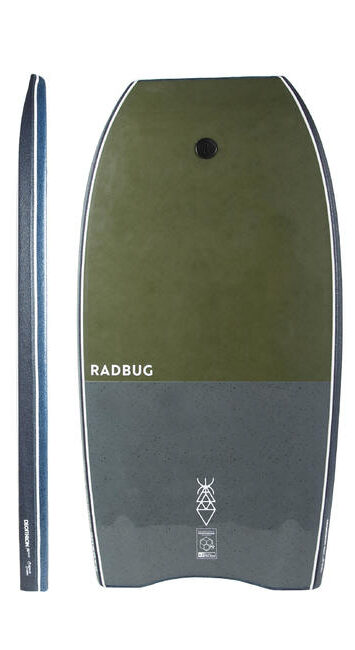
The Rocker is the upward curve of the bodyboard of its Nose.
The more “Rocker” a board has, the better its maneuverability but the slower its speed.
All bodyboards should be straight but have a slight rocker near the tip, with the difference between models being fractions of an inch. Some boards have a flat rocker that increases your speed but reduces your control. We don’t recommend flat rockers for beginners.
As the board ages, it will naturally increase its rocker under stress, so account for that when finding a long-term board for yourself.
Conclusion on the Rocker
Don’t worry too much about the rocker form until you are a really proficient surfer. As a beginner you should just check that you don’t buy a flat – rocker board.
The Tail
The tail is where you get all the stability during turns.
The tail’s shape will affect how the bodyboard feels and behaves when you’re exiting your maneuvers.
Wider tails provide the board more speed and stability, however, the wide tail will cost you a little bit of manoeuvrability. This means that they need more effort to release for spins and quick turns. Consequently, a narrow tail provides a little less stability and speed, but it better suited if you want to do tricks.
Furthermore there are two general type of tail – shape:
- Crescent Tail
- Bat – shaped Tail
Today Crescent tails have become the standard on most Bodyboards (left Picture). A Crescent – tail Board is a little more comfortable to ride as it fits the belly better.
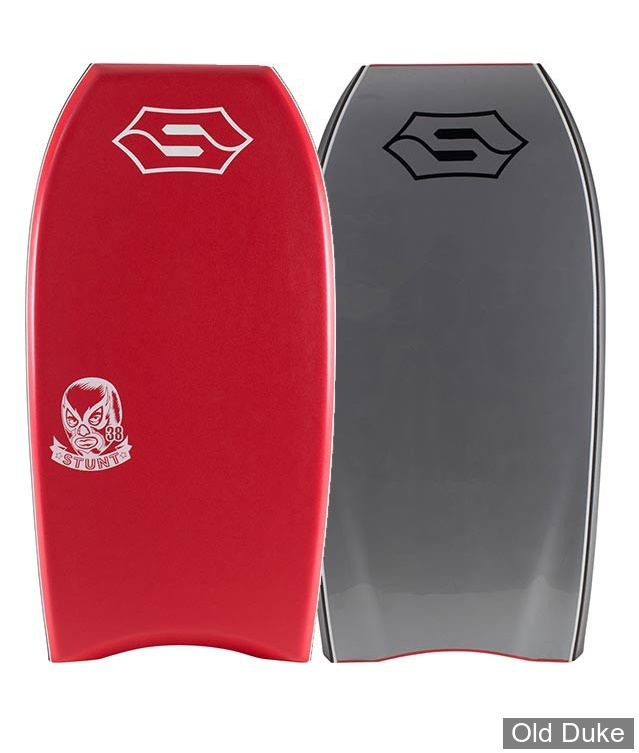
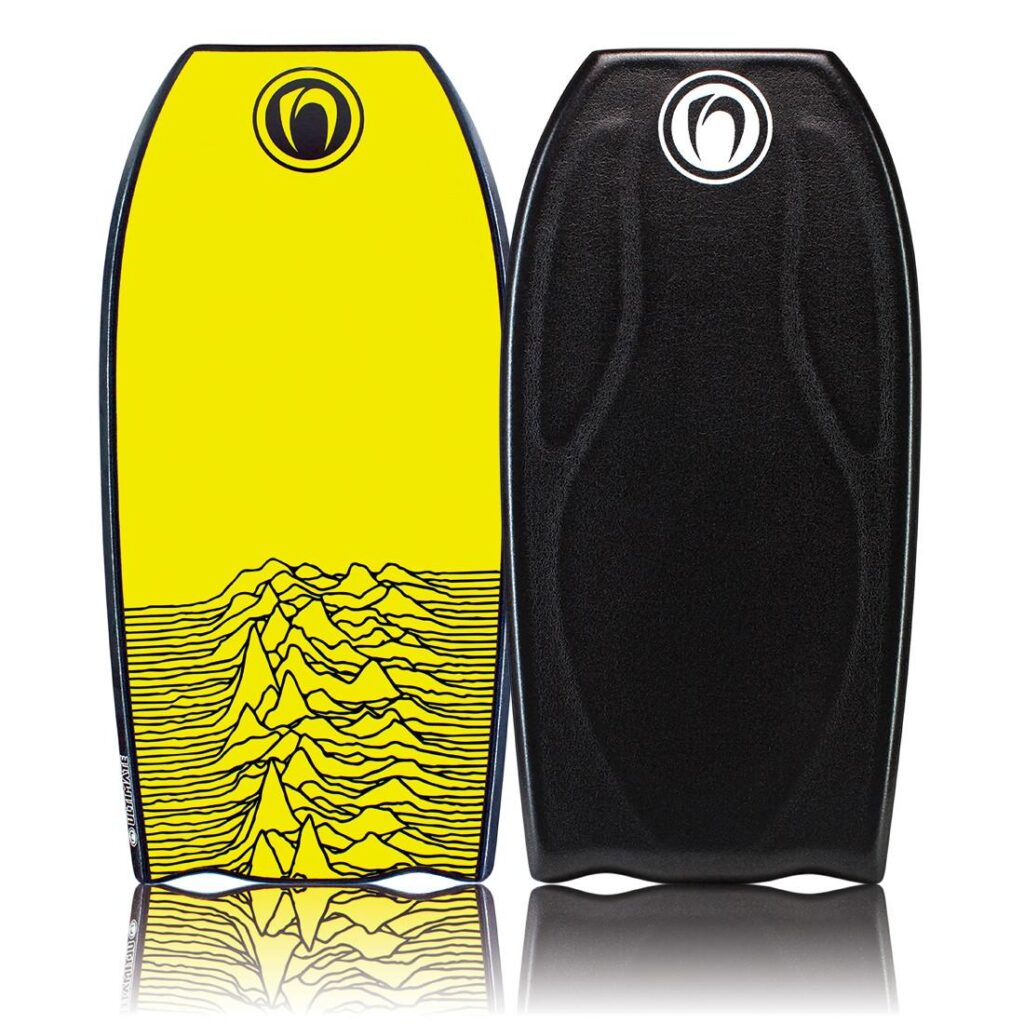
Bat – shaped tail Board (right Picture) on the other hand have the advantage that they add slightly more surface and buoyancy to the Board without adding additional length.
Conclusion on the Tail Shape
Even though Bat-shaped bodyboard tails have fallen out of favor in the market and with customers, but they are still out there and can work for you, especially if your goal is to ride the waves at maximum speed.
However, in our opinion the Tail Design shouldn’t be a feature on which you pay a lot attention to.
The Rail and the Rail Ratio
The rail is the side edge of a bodyboard and acts kind as the steering wheel. In detail, the rail is the part on the side of a board which is in direct contact with the water, whereas the so-called chine is the top part around the deck.
The two main types of rail ratio, or exactly rail – chine ratio, are the 60/40 and the 50/50, but the 60/40 is definitely the more common one.
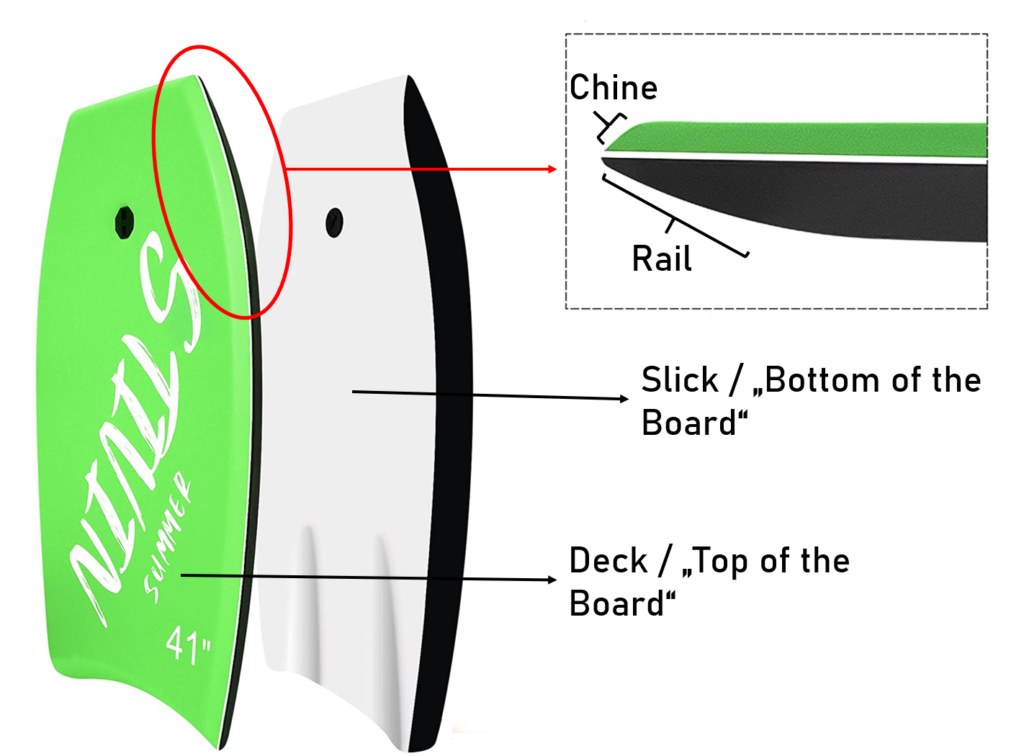
The 60/40 rail ratio means that 60% of the bodyboard’s bottom is submerged, providing more control and stability that comes in handy when dealing with steep waves. The other rail configuration is 50/50, with precisely half of the bodyboard being above water during steady movement which gives you more speed.
Conclusion on the Rail Ratio
As a beginner, we suggest that you go with the widespread 60 / 40 ratio.
The Nose
When talking about the Nose one means the bodyboard’s top. As it is also an important part of the overall shape of the board, it has an impact on the wave riding experience:
- Narrow noses mean higher speed but a more loose control
- Wider noses mean accordingly more control but lower speeds
The Wide Point
The Wide Point is the area of the Board in where the contour (of the rail) change their direction. It is again an important part of the shape of the Body- or Boogie Board as it defines the width distribution. The main feature therein is the height of the Wide Point with respect to the tail of the Board.
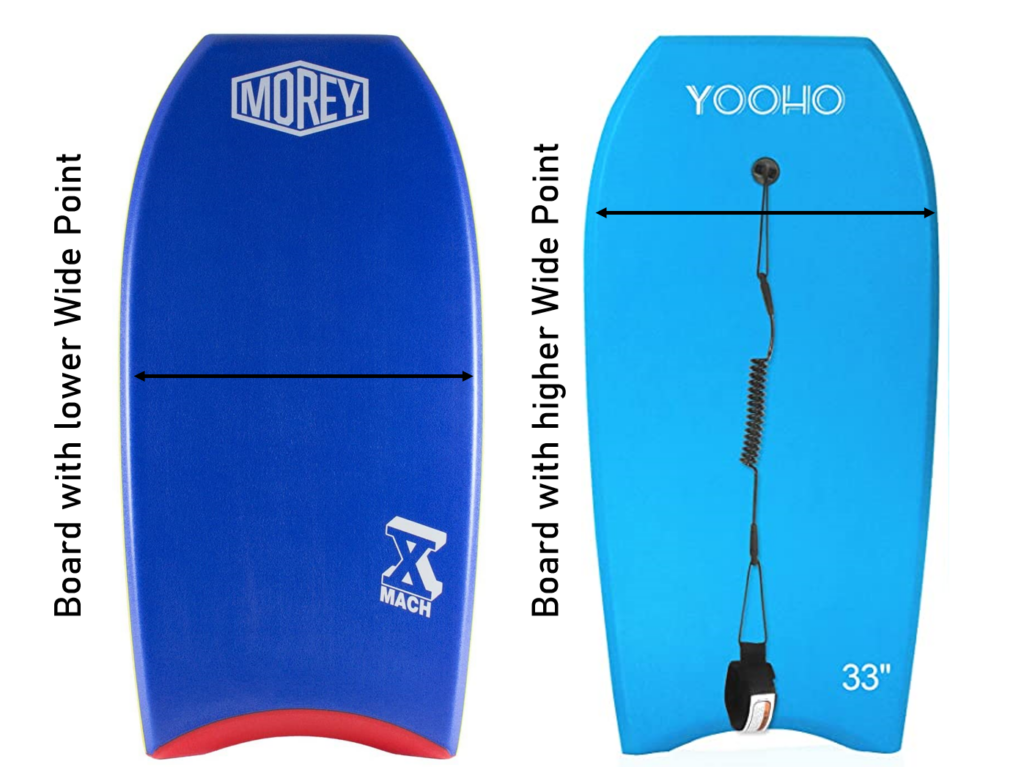
Generally you can go with the following:
- A Board with a lower Wide Point gives you more maneuvrability and stability
- A Board with a higher Wide Point is preferred if you look for more speed
Leash plug
A bodyboard will often not come with an installed leash plug, so here’s how to do it:
- Choose a side for the plug depending on your main hand
- Choose a spot 7–8 inches from the top of the board
- Mark the spot with a pencil
- Push a screwdriver all the way through the spot. You can also pre-heat the spot with a lighter so that the screwdriver can be easier pushed through the board.
- Connect the two parts of the plug through the hole
- Make sure they are aligned straight and screw them tightly
Remember some of the key things to know about the Safety Leash:
- A leash with about 5′ length should do it normally if you are wearing it on your wrist
- A bicep leash should be about one to two foot longer
- Install the leash plug on the same side as your arm preference. So if you are left – handed, place it on the left; if you are right – handed, on the right side. If you do not have a clear preference, you can place it in the middle of the board.
Final Conclusion – what to know when choosing a Bodyboard
If you’re a bodyboarding newbie, you should start out small and move up.
A wider bodyboard with a one stringer system, a PE core and a typical crescent tail is surely a good choice to learn bodyboarding and see how far you wanna go with your new hobby.
In order to choose the size of your first board, use the size chart at the beginning of this article to guide you.
When you advance in your bodyboarding skills and start to ride bigger waves and learn some tricks, move on to high – quality boards and invest in a 3-stringer setup for maximum durability, ideally with a PP core.
An exception to this could be when you’re mostly surfing in warm or tropical waters: in this case, it is worth to directly invest into a PP Core Board.
Our Bodyboard Buying Guide
We know: there is a lot of information given in this article. But if you made it so far, we hope that we could give you all the knowledge needed to make an informed decision!
The crucial question is now: how to apply the information?
That’s why we’ve put together an additional Bodyboard Buying Guide which will lead you through the whole decision process.
Check it out!
Is Bodyboarding hard to learn?
We promise:
To learn to ride your first waves is easy. It is one of these sports with which you can real fun right from the beginning.
Just have a look at our tips on how to prepare for your first session – and you will be stoked after your first session!


